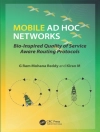Explains how and why Kanban offers a new approach to change in 21st Century businesses
This book provides an understanding of what is necessary to properly understand change management with Kanban as well as how to apply it optimally in the workplace. The book emphasizes critical aspects, several traps which users repeatedly fall into, and presents some practical guidelines for Kanban change management to help avoid these traps. The authors have organized the book into three sections. The first section focuses on the foundations of Kanban, establishing the technical basis of Kanban and indicating the mechanisms required to enact change. In the second section, the authors explain the context of Kanban change management—the options for change, how they can be set in motion, and their consequences for a business. The third section takes the topics from the previous sections and relates them to the social system of business—the goal is to guide readers in the process of building a culture of continuousimprovement by reviewing real case studies and seeing how Kanban is applied in various situations.
Kanban Change Leadership:
- Explains how to implement sustainable system-wide changes using Kanban principles
- Addresses the principles and core practices of Kanban including visualization, WIP limits, classes of service, operation and coordination, metrics, and improvement
- Describes implementation, preparation, assessment, training, feedback, commissioning, and operation processes in order to create a culture of continuous improvement
Kanban Change Leadership is an educational and comprehensive text for: software and systems engineers; IT project managers; commercial and industrial executives and managers; as well as anyone interested in Kanban.
قائمة المحتويات
Appraisals x
Foreword xii
Preface xvi
Part 1 Kanban 1
1 Introduction 3
1.1 What we Care About 4
1.2 Who should Read this Book 6
2 Kanban Principles and Core Practices 8
2.1 Seeking Productivity 9
2.2 kanban and Kanban 12
2.3 Evolutionary Change Management 15
2.3.1 Knowledge Work: The Problem of Invisibility 17
2.4 Kanban Core Practices 18
2.4.1 Making the Work Visible 18
2.4.2 Limiting the Wi P 19
2.4.3 Managing the Flow 20
2.4.4 Making Policies Explicit 21
2.4.5 Implementing Feedback Mechanisms 22
2.4.6 Carrying Out Collaborative Improvements 22
2.5 Implementation of the Core Practices in an Organization 23
3 Visualization 25
3.1 First Step: Defining the Extent 26
3.2 Second Step: Visualizing the Process 27
3.2.1 How Are Work Items Visualized? 28
3.2.2 Representation of Parallel Processing 30
3.2.3 Representation of Activities Without a Fixed Sequence 32
3.3 Determining the Work Item Types 32
3.3.1 Visualization of Work Item Types 34
4 Wi P limits 38
4.1 The Advantages of Wi P Limits 39
4.1.1 Making Problems Visible 41
4.1.2 Making Bottlenecks Visible 42
4.2 Setting Wi P Limits 48
4.2.1 Size of the Input Queue 48
4.2.2 Wi P Limits for Various Work Item Types 49
4.2.3 Consequences of Different Wi P Limits 50
5 Classes of Service 53
5.1 Cost of Delay and Policies 54
5.1.1 The Class of Service “Expedited” 56
5.1.2 The Class of Service “Fixed Delivery Date” 57
5.1.3 The Class of Service “Standard” 59
5.1.4 The Class of Service “Intangible” 60
5.2 Capacities of Classes of Service 61
5.3 SLAs 62
6 Operation and Coordination 65
6.1 Daily Stand?]up Meeting 66
6.2 Queue Replenishment Meeting 67
6.2.1 Backlog Maintenance 69
6.3 Release Planning Meetings 69
6.3.1 What Is a Good Delivery Cadence? 70
6.4 Team Retrospectives 72
6.5 Operations Reviews 72
7 Metrics and Improvements 74
7.1 Metrics in Kanban 75
7.2 Cumulative Flow Diagram 77
7.3 Measuring the Lead Time 79
7.3.1 Throughput 80
7.4 Rework and Blockers 82
7.4.1 Blockers 82
7.5 Improvements 83
7.5.1 Theory of Constraints 84
7.5.2 Reducing Waste 86
7.5.3 Reducing Variability 86
Part 2 Change and LEADERSHIP 89
8 Forces of Change 91
8.1 Turbulent Times 92
8.2 Turbulent Change 95
9 Environments and Systems 100
9.1 Organizations Close?]up 103
9.2 A Roadmap for Change 106
10 Organizational and Personal Change 110
10.1 The Iceberg of Change 112
10.2 The Change Curve 115
10.2.1 Fear and Resistance 116
10.2.2 Rational Insight and Emotional Acceptance 117
10.2.3 Applying the New Behaviors 118
10.2.4 Learning and Integration 119
11 Emotions in Change Processes 122
11.1 Uncertainty Worry and Anxiety 123
11.2 Anger and Aggression 126
11.3 Sadness and Disappointment 128
11.4 Enthusiasm Joy and Courage 129
12 Corporate Culture and Politics 133
12.1 The Power of Corporate Culture 136
12.2 Corporate Culture and Micropolitics 139
13 Conclusions for Kanban Change Leadership 142
13.1 Mindfulness 143
13.1.1 A New Paradigm for Management and Leadership 145
13.2 Communication 148
13.2.1 The Meaning of Joint Reflection 152
13.2.2 The Power of Dialog 154
13.3 Process Design 156
Part 3 Kanban CHANGE LEADERSHIP 161
14 From the Idea to the Initiative 163
15 General Clarification 167
15.1 Clarify the Method 169
15.2 Clarify the Organizational Context 171
16 Deeper Understanding 175
16.1 The Personal Retrospective 176
16.2 The Team Constellation 179
16.3 The Change Dialog 182
16.3.1 Empathy 185
16.3.2 Delimitation 186
16.3.3 Objectification 186
16.4 The Team Conversation 188
16.5 The Team Retrospective 191
16.6 The Stakeholder Map 195
16.7 The Stakeholder Interview 197
16.8 Stakeholder Workshop 200
16.8.1 Feedback Through the Kanban Sponsor 201
16.8.2 Feedback from the Stakeholders 203
16.9 Solo Dialog Coaching or Training? 205
17 The System Design Workshop 208
17.1 Identifying the Work Item Types 213
17.1.1 Filling the Stakeholder Map with Work Item Types 214
17.1.2 Criteria for Decisions Concerning Clusters 215
17.1.3 White Noise: Background Voices 216
17.1.4 Variation 1 217
17.1.5 Variation 2 218
17.2 Identifying the Processes 219
17.2.1 Finding the Work Steps for Our Work Item Types 219
17.2.2 Simulation and Ticket Design 222
17.3 Determining the Wip Limits 224
17.3.1 Step 1: Finding the Right Capacities 225
17.3.2 Step 2: Translation into Wi P Limits 227
17.3.3 Distribution of the Wi P Limits for a Support or Test Team 232
17.4 Determining the Classes of Service 234
17.4.1 Creating Clarity between Work Item Types and Classes of Service 235
17.4.2 Defining the Policies 237
17.4.3 Establishing the Capacities of the Classes of Service 238
17.5 Defining the Measurements 241
17.5.1 Selecting the Appropriate Measurements 243
17.5.2 Step 1: Teamwork: Identification of Possible Measurements 243
17.5.3 Step 2: Determining the Initial Handling 244
17.6 Determining the Frequency of Meetings 246
17.6.1 The Daily Stand?]Up Meeting 247
17.6.2 Team Retrospectives 248
17.6.3 The Queue Replenishment Meeting 249
17.6.4 The Release Planning Meeting 251
17.7 Concluding the System Design Workshop 252
17.7.1 Simulation of the Entire Kanban System 252
17.7.2 Conclusion 253
18 Operation 256
18.1 Moving from a Failure Culture to a Learning Culture 258
18.1.1 Yes I Make Mistakes 260
18.1.2 A Particular Mistake: Slack 262
18.2 Facilitation 264
18.3 Conflicts in Operation 269
18.3.1 An Important Stakeholder Doesn’t Stick to the Agreements 270
18.3.2 The Team Relapses into Old Habits 271
18.3.3 Collaboration Is Plagued by Dysfunctional Behavior 273
18.4 Carrying the Kanban Fire Onward 275
list of Figures 278
references 281
Index 287
عن المؤلف
Klaus Leopold, Ph D., is a computer scientist with extensive experience in helping IT organizations to manage knowledge work. Dr. Leopold is the managing partner of the company LEANability Gmb H, based in Vienna, Austria. He is a founding member of Lean Kanban University, co-founder of the Limited Wi P Society in Austria and Switzerland, a founding member of the management network Stoos, and author of the blog klausleopold.com.
Siegfried Kaltenecker, Ph D., is the managing partner of the company Loop Organizational Consulting Gmb H, based in Vienna, Austria. As a change management and leadership expert, Dr. Kaltenecker has specialized in Process Management with Lean/Agile/Kanban/Scrum and has worked as a consultant and trainer for over twenty years for a variety of companies. He is the co-editor of ‘PAM—Platform for Agile Management’ and co-author of “Leading Self-Organizing Teams”.












